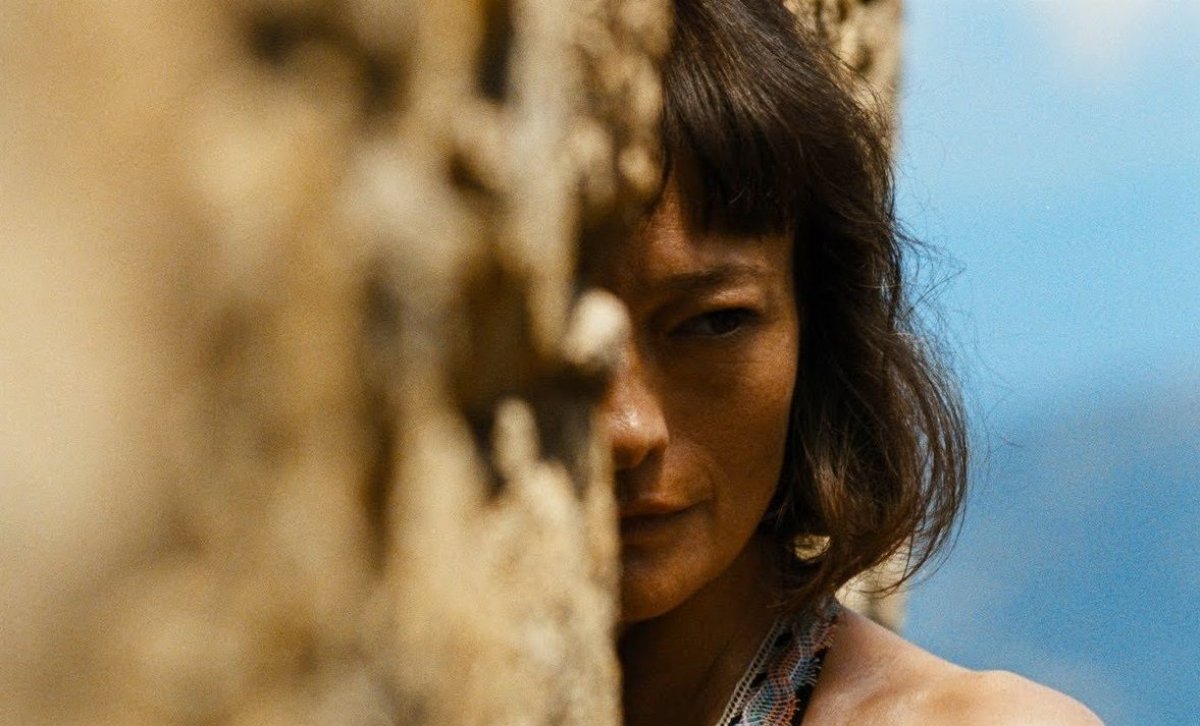It takes a while for Let the Corpses Tan to arrive at a place where its maximalist approach is matched by characters and events able to stand up to the overwhelming style. At first, the deluge of blue filters, first-person giallo shots and Sergio Leone close-ups are applied indiscriminately. Photo negative imagery, indicative of psychological distress, is wasted on the carving of a pork haunch. When the lighting of every cigarette is shot like an event, when characters mopping sweat from their brows earn the same extreme close-ups as a climactic gunfight, Let the Corpses Tan feels like empty panache.
But eventually the disparate elements of Let the Corpses Tan align more effectively. First, as a single-location action movie, then as a psychic barrage—a deluge of technique closer to the explosive end of Zabriskie Point than your average standoff, which washes over the viewer in successive waves, alternately breathtaking, tiresome, breathtaking, repetitive.
Based on the French crime novel Laissez bronzer les cadavres, by Jean-Patrick Manchette and Jean-Pierre Bastid, Let the Corpses Tan opens in the sprawling ruins of clay buildings, occupied by the artist Luce (Elina Lowensohn) and writer Max Bernier (Marc Barbe). Luce was once Max's muse, inspiring him with her bondage-heavy performance art, until he discovered a preference for alcohol and sleeping through the heat of the day in a bombed-out chapel. Here, Luce hosts wandering souls and society's outcasts, situating her fort somewhere between an artist commune and a squat. But shortly after a band of machine-gun toting robbers shows up with a trunkful of stolen gold the desert redoubt becomes a war zone.

Unlike 2016's Free Fire—a similarly high-concept, single-location gunfight—Let the Corpses Tan feels liberated, rather than chained, by its self-imposed limitations. French directors Helene Cattet and Bruno Forzani (The Strange Colour of Your Body's Tears) wring every drama possible out of their Corsican location, matching dust-choked ruins with a cast of black-leather psychopaths and low lifes straight out of an Umberto Lenzi movie. The overt stylization tends to overshadow just how expertly Cattet and Forzani stage and choreograph their shootout, with the various factions legible enough to always know who aims at who across the parched scrub.
And while the characters start as macho sketches, they're soon invested with a surprising amount of soulfulness. Even the leader of the criminals, a salty dog named Rhino (Stephane Ferrara), begins to feel sympathetic under the withering pressures of the conflict. Better still are some of the side plots, such as the romance between a hostage (Marine Sainsily) and a young criminal (Pierre Nisse), who learns too late the object of his desire is more aroused by her discovery of violence (depicted, in exploitation movie style, by her fantasy of a machine gun shooting off her clothes) than his good looks.
The accumulation of imagery, characters and violence can get exhausting. There's no powerful image Let the Corpses Tan won't overplay, like the overhead photograph of the combat zone with ants running all over it, or the characters' gold-fueled reveries inspired by their piles of plunder. Others, like Bernier's musical momento, are little more than emotionally empty riffs cribbed from more heartfelt moments in other movies—in this case, Lee Van Cleef's musical pocketwatch from For a Few Dollars More. Worst of all, Let the Corpses Tan eventually chooses style over its best character, transforming the caustic Luce into a symbolic avatar of feminine power, exchanging her scowl and anarchism ("I don't like cops, I don't like society. Would you understand? No.") for a silhouette spreading ether and sex across the battlefield.
Overindulgence in stylistic tricks and exploitation homage may be the source of all the weaknesses in Let the Corpses Tan, but it's hard to complain when the result is something this intoxicating, strange and inventive. While anyone watching the trailer will have an idea of the grindhouse, 16mm vibes radiating off Let the Corpses Tan, there's a surprising coherence to the plot and characters that elevates it above pastiche. Let the Corpses Tan is reference-heavy enough to feel like time travel, but precise enough in its vision to feel new.
Uncommon Knowledge
Newsweek is committed to challenging conventional wisdom and finding connections in the search for common ground.
Newsweek is committed to challenging conventional wisdom and finding connections in the search for common ground.
About the writer
To read how Newsweek uses AI as a newsroom tool, Click here.








